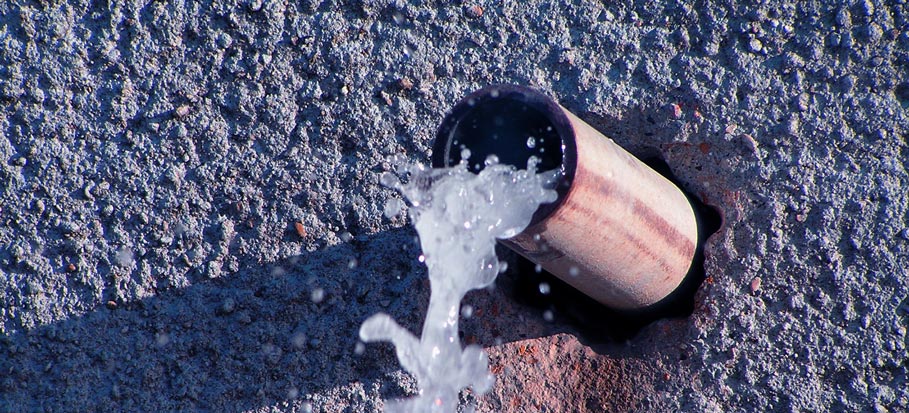6 Ways to Find Concealed Water Leakages in Your House
6 Ways to Find Concealed Water Leakages in Your House
Blog Article
Everyone has his or her own thinking when it comes to Locating water leaks.
.jpg)
Early discovery of dripping water lines can mitigate a potential catastrophe. In addition to conserving you cash, it will certainly minimize the irritation as well as irritation. The minute you find a leakage, calling your plumber for fixings is the most effective remedy. Nonetheless, some tiny water leakages may not be visible. Right here are some hacks that help if you can not find it with your nude eyes.
1. Analyze the Water Meter
Every home has a water meter. Checking it is a proven manner in which helps you find leaks. For beginners, switch off all the water sources. Ensure no one will certainly purge, make use of the faucet, shower, run the washing machine or dishwasher. From there, most likely to the meter and also watch if it will certainly change. Because no person is utilizing it, there should be no movements. If it moves, that suggests a fast-moving leak. Likewise, if you detect no changes, wait a hr or two and inspect back once more. This means you might have a slow leakage that can even be underground.
2. Inspect Water Intake
If you identify sudden changes, in spite of your usage being the exact same, it implies that you have leaks in your plumbing system. An unexpected spike in your expense suggests a fast-moving leak.
A stable boost every month, even with the exact same routines, reveals you have a slow-moving leakage that's likewise slowly rising. Call a plumber to completely check your home, specifically if you feel a warm area on your flooring with piping beneath.
3. Do a Food Coloring Test
When it comes to water usage, 30% comes from toilets. If the color somehow infiltrates your dish during that time without flushing, there's a leak between the tank and dish.
4. Asses Exterior Lines
Do not forget to inspect your exterior water lines as well. Examination faucets by connecting a yard tube. Needs to water permeate out of the link, you have a loosened rubber gasket. Change this as well as guarantee all connections are limited. It will certainly help get it expertly checked out as well as maintained yearly if you have actually obtained a lawn sprinkler system. One little leak can lose lots of water as well as surge your water expense.
5. Check and Examine the Situation
Property owners need to make it a routine to examine under the sink counters and even inside cupboards for any kind of bad odor or mold and mildew growth. These two red flags show a leakage so punctual attention is needed. Doing regular inspections, even bi-annually, can save you from a major trouble.
Examine for discolorations and compromising as many pipes as well as home appliances have a life expectancy. If you suspect leaking water lines in your plumbing system, don't wait for it to intensify.
Early detection of dripping water lines can mitigate a possible disaster. Some little water leakages might not be noticeable. Inspecting it is a surefire method that aids you discover leakages. One small leakage can lose tons of water and also surge your water costs.
If you suspect dripping water lines in your plumbing system, don't wait for it to escalate.
WARNING SIGNS OF WATER LEAKAGE BEHIND THE WALL
PERSISTENT MUSTY ODORS
As water slowly drips from a leaky pipe inside the wall, flooring and sheetrock stay damp and develop an odor similar to wet cardboard. It generates a musty smell that can help you find hidden leaks.
MOLD IN UNUSUAL AREAS
Mold usually grows in wet areas like kitchens, baths and laundry rooms. If you spot the stuff on walls or baseboards in other rooms of the house, it’s a good indicator of undetected water leaks.
STAINS THAT GROW
When mold thrives around a leaky pipe, it sometimes takes hold on the inside surface of the affected wall. A growing stain on otherwise clean sheetrock is often your sign of a hidden plumbing problem.
PEELING OR BUBBLING WALLPAPER / PAINT
This clue is easy to miss in rooms that don’t get much use. When you see wallpaper separating along seams or paint bubbling or flaking off the wall, blame sheetrock that stays wet because of an undetected leak.
BUCKLED CEILINGS AND STAINED FLOORS
If ceilings or floors in bathrooms, kitchens or laundry areas develop structural problems, don’t rule out constant damp inside the walls. Wet sheetrock can affect adjacent framing, flooring and ceilings.
https://www.servicemasterbyzaba.com/blog/how-to-detect-water-leakage-in-walls/

Hopefully you enjoyed our article on Detecting hidden plumbing leaks. Thanks a lot for taking a few minutes to browse our post. Are you aware of somebody who is in to the subject? Do not hesitate to share it. Thank-you for going through it.
Report this page